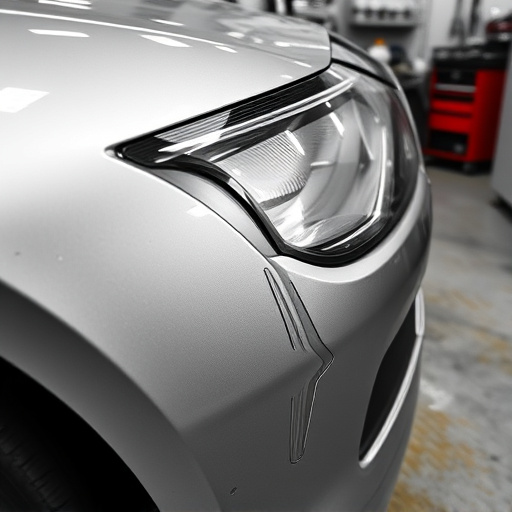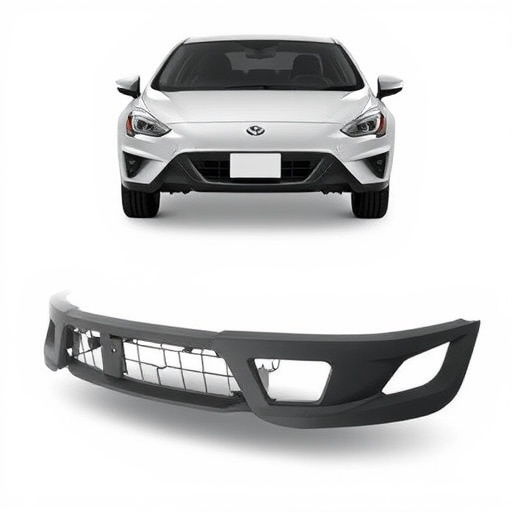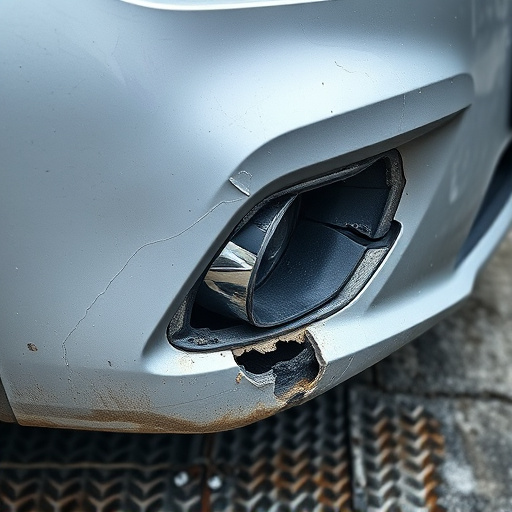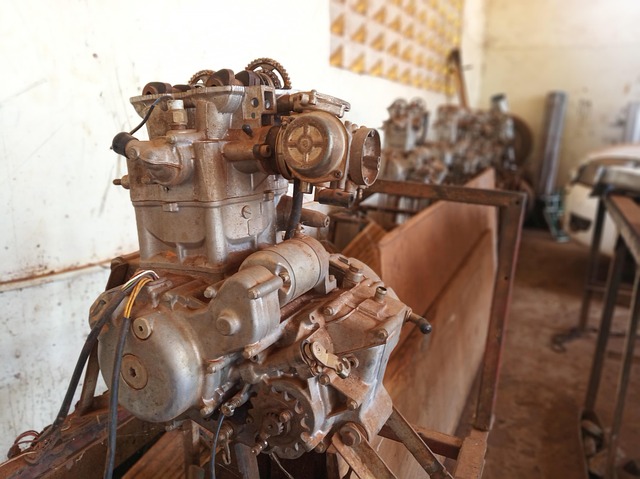The Mercedes THERMOTRONIC climate control system requires prompt repair for common fault codes caused by sensor or coil issues, preventing escalation to complex problems. Specialized body shops with diagnostic tools offer expert repairs, involving code identification, component inspection, and targeted fixes like replacement parts or recalibration. Regular preventive maintenance, including service, fluid checks, and filter replacements, alongside external factor monitoring, is crucial for optimal system performance and avoiding costly damages.
Mercedes THERMOTRONIC systems are integral to the comfort and performance of modern vehicles. When a fault code is detected, it signals a potential issue that requires prompt attention. This article guides you through the process of repairing Mercedes THERMOTRONIC systems after code detection, offering insights into common faults, diagnosis, and preventive maintenance tips to keep your vehicle running smoothly. Learn how to tackle these issues effectively with our step-by-step approach tailored for Mercedes THERMOTRONIC repair.
- Understanding Mercedes THERMOTRONIC System and Common Fault Codes
- Steps for Diagnosing and Repairing THERMOTRONIC Issues
- Preventive Maintenance Tips to Avoid Future Fault Code Errors
Understanding Mercedes THERMOTRONIC System and Common Fault Codes

The Mercedes THERMOTRONIC system is a sophisticated climate control mechanism designed to maintain optimal cab temperatures, enhancing driver and passenger comfort. This innovative technology uses a series of sensors, actuators, and components working in harmony to regulate temperature, humidity, and air quality. Understanding this intricate system is crucial when addressing any repair needs, especially after fault code detection.
Common fault codes in the Mercedes THERMOTRONIC system can range from issues with the temperature sensor, evaporator coils, or even the electronic control unit (ECU). These codes may manifest as problems with heating efficiency, cooling performance, or unusual cabin conditions. For instance, a faulty temperature sensor might trigger a code indicating incorrect temperature readings, leading to inefficient climate control. Identifying and rectifying these issues typically requires advanced diagnostic tools and expertise available in specialized automotive body shops. Prompt action on these faults is recommended, as they can escalate into more complex problems, impacting both vehicle performance and comfort.
Steps for Diagnosing and Repairing THERMOTRONIC Issues
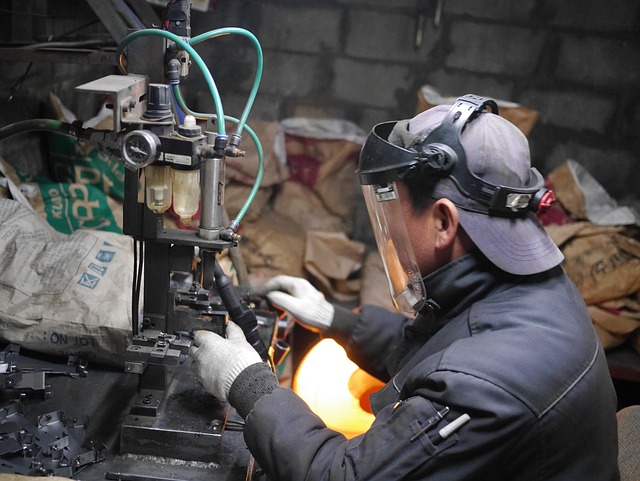
Diagnosing and repairing Mercedes THERMOTRONIC issues requires a systematic approach. Begin by connecting your diagnostic scanner to the vehicle’s onboard computer to retrieve fault codes, which can point to specific problems within the system. After identifying the code, inspect the related components for any visible damage or abnormalities—a step crucial in understanding the root cause. Common symptoms like unusual temperature readings, inefficient heating, or cooling issues will guide you during this process.
Once identified, repair strategies vary based on the fault. Simple fixes might involve replacing faulty sensors or thermostats, while more complex problems could demand recalibration of the control module or even a system reset. Utilizing specialized tools and following manufacturer guidelines ensures precise Mercedes THERMOTRONIC repair, preventing further car damage repair or costly vehicle dent repair. Effective diagnostics and repairs maintain the comfort and efficiency of your Mercedes, ensuring optimal performance in all seasons.
Preventive Maintenance Tips to Avoid Future Fault Code Errors

Regular preventive maintenance is key to ensuring your Mercedes THERMOTRONIC system operates smoothly and avoids future fault code errors. Start by maintaining a consistent service schedule as recommended by the vehicle manufacturer, focusing on keeping all fluid levels optimal and replacing filters at regular intervals. This includes the coolant, engine oil, and air filters, which are crucial for the efficient functioning of your car’s heating and cooling system.
Additionally, keeping an eye on external factors such as extreme temperature changes can help prevent system strain. Regularly inspect and clean the THERMOTRONIC components, especially in areas prone to moisture accumulation, to avoid corrosion or damage. Remember that proper vehicle repair and maintenance not only extend the life of your Mercedes but also contribute to a safer and more enjoyable driving experience. Auto detailing practices, like keeping the underbody clean and protected, can also play a role in maintaining optimal system performance.
Mercedes THERMOTRONIC systems, integral to modern vehicle comfort, require meticulous care and repair when fault codes emerge. By understanding common error messages and following structured diagnostic steps, car owners can effectively address issues. Regular preventive maintenance, including timely fluid changes and system checks, is key to avoiding future problems. Embracing these practices ensures a well-maintained Mercedes THERMOTRONIC repair process, enhancing vehicle longevity and passenger satisfaction.

